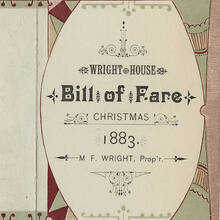A loosely related group of nearly monoline sans serifs with
oldstyle roman proportions. Appearing in the 1860s, these are some
of the earliest examples of sans typefaces with a lowercase and
ranging numerals meant for text setting.
As early as 1860, Boston had a Gothic No. 5 in this
style (used for sample). Bruce had Light-face Gothic No.
201 and No. 4. (as early as 1865 [Tracy]).
Farmer, Little & Co had a variation also called Gothic No.
4, and a smaller Gothic No. 7. Cincinnati had
Gothic No. 3. B&BS had Gothic No. 6.
Gronau had a Breite Magere Grotesque.
Shapes vary between sizes: some had a distinctive open-bowled
‘g’ also found in Commercial Type’s (more More…
A loosely related group of nearly monoline sans serifs with oldstyle roman proportions. Appearing in the 1860s, these are some of the earliest examples of sans typefaces with a lowercase and ranging numerals meant for text setting.
As early as 1860, Boston had a Gothic No. 5 in this style (used for sample). Bruce had Light-face Gothic No. 201 and No. 4. (as early as 1865 [Tracy]). Farmer, Little & Co had a variation also called Gothic No. 4, and a smaller Gothic No. 7. Cincinnati had Gothic No. 3. B&BS had Gothic No. 6. Gronau had a Breite Magere Grotesque.
Shapes vary between sizes: some had a distinctive open-bowled ‘g’ also found in Commercial Type’s (more modulated) Marr Sans, derived from Scottish type of the 1870s.









